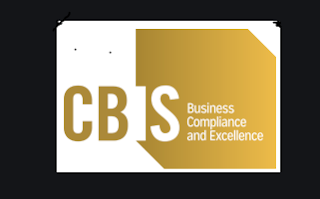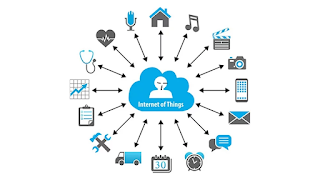What is CBIS(Computer Based Informaiton System)?
Computer Based Information System (CBIS)
A computer-based information system (CBIS) is an information system that uses computer and often telecommunications technology to perform some or all of its intended tasks. An information technology is a particular component of a system, like a personal computer, a printer, or a network. But few information technologies are used alone. Rather, they are most effective combined into information systems. The basic components of information systems are the following:
- Hardware
- Software
- Database
- Network
- Procedure
- People
Capabilities of CBIS
1. Provide Fast and Accurate Transaction
2. Provide Large Capacity, Fast Access Storage
3. Provide Fast Communications
4. Reduce Information Overload
5. Span Boundaries
6. Provide Support for Decision Making
7. Provide a Competitive Weapon
Information Technology Architecture
A high-level map or plan of the information assets in an organization, which guides current
operations and is a blueprint for future directions. In preparing the IT architecture, the
designer needs similar information, which can be divided into two part:
1. The business needs for information
The existing and planned IT infrastructure and applications of the organization
2. IT Infrastructure
The physical facilities, IT components, IT services, and IT management that support
an entire organization.
- IT components are the computer hardware, software and communications technologies that are used by IT personnel to produce IT services.
- IT services include data management systems development , and security concerns . IT infrastructure include these resources as well as their integration, operation, documentation, maintenance and management
Evolution of Information System
1) Transaction Processing System (TPS)
The first business application of computers( in the mid- 1950s) performed repetitive high volume, transaction-computing tasks. The computers crunched numbers summarizing and organizing transactions and data in the accounting, finance, and human resources areas.Such systems are generally called transaction-processing systems (TPSs)
2) Management Information Systems (MIS)
These systems access, organize, summarize and display information for supporting routine decision making in the functional areas
3) Support System or Office Automation Systems (OAS)
Systems that are developed to support office and clerical workers such as word processing system. Computer Aided Design (CAD) is another example of support system. .
4) Decision Support System (DSS)
Decision Support Systems were developed to provide computer based support for complex, non-routine decision. DSS expanded into two direction
i) Executive Information System
ii) Group Support system.
The various commercial software products that support people working in groups is called Groupware
5) End-user Computing
The use or development of information systems by the principal users of the systems outputs, such as analysts, managers, and other professionals is called End-user computing system
6) Intelligent System (IS)
Managerial applications of artifi cial intelligence is called IS. It include Expert System (ES) which is an advisory systems that provide the stored knowledge of experts to non experts.There are new type of IS with machine learning capabilities that can learn from historical cases.
7) Knowledge Management System
It supports the creating, gathering, organizing, integrating and disseminating of organization knowledge.
8) Data Warehousing
A data warehouse is a database designed to support DSS, ESS and other analytical and end-user activities.
9) Mobile computing
Information systems that support employee who are working with customers or business partners outside the physical boundaries of their companies; can be done over wire line or wireless networks.
Classification of Information Systems
The two most common Classification are:
1. Classification by breath of support
2. Classification by organizational level .
1) Classification by breadth of support
Typical information systems that follow the hierarchical organization structure are functional (departmental) enterprise-wide and inter-organizational
- Functional information systems are organized around the traditional departments.
- Enterprise information systems serve several departments or the entire enterprise.
- Inter-organizational systems connect two or more organizations.
- An organization?s supply chain describes the ow of materials, information money and service from raw material suppliers through factories and warehouses to the end customers.
- IT provide two major types of software solution for managing supply chain activities First enterprise resource planning (ERP), Second Supply Chain Management (SCM)
2) Classification by Organizational Levels
The typical enterprise is organized hierarchically, from the clerical and office worker layer,to the operational layer, the managerial layer, the knowledge worker layer and finally the strategic layer.
1. Clerical Level
Clerical workers constitute a large class of employee who support managers at all levels of the company. Among clerical workers, those who use, manipulate, or disseminate information are referred to as data workers. These employee include bookkeepers, secretaries who work with word processors, electronic file clerks, and insurance claim processors.
2. Operational Level
Operational, or first-line managers deal with the day-to day operations of the organization, making routine decision, which deal in general with activities such as short- term planning, organizing, and control.
3. The Knowledge-Work Level
They act as advisers and assistants to both top and middle management and are often subject-area experts. Many of these professional workers are classifi ed as knowledge workers, people who create information and knowledge as part of their work and integrate it into the business
4. The Strategic Level
Top-level or strategic managers (the executive) make decision that deal with situation that may significantly change the manner in which business is done
5. Computing Environment
It is the way in which an organization's information technologies ( hardware, software, and communications technology) are organized and integrated for optimal efficiency and effectiveness.
6. Legacy System
Older systems, typically those that process an organizations high volume transactions that are central to the operations of a business.
7. Distributed Computing
Computing architecture that divides the processing work between two or more computers, using a network for connection, also called distributed processing. Distributed computing can be further divided into following:
- Client/Server Architecture:
(a) A type of distributed architecture that divides distributed computing units into two major categories, clients and servers, connected by a network .
(b) Client:
A computer (such as a PC attached to a network) that is used to access shared network resources.
(c) Server:
A computer that is attached to a client/server network and provides clients with variety of services.
- Enterprise wide computing Computing environment in which each client/server architecture is used throughout an organization.
- Peer-to-Peer (P2P) A distribute computing network in which each client/server computer shares files or computer resources directory with others but not through a central service (as in traditional client/ server architecture).
- Web Based System
(a) Web based systems:
Applications or service that are resident on a server that is accessible using a web browser and is therefore accessible from anywhere via the internet.
(b) Internet:
a worldwide system of computer ? a network of networks; a public, cooperative and self sustaining facility accessible to hundreds of millions of people worldwide.
(c) Information Superhighway.
A national fiber-optic- based network and wireless infrastructure that will connect all internet users in a country.
(d) World Wide Web
An application that uses the transport functions of the Internet; has universally accepted standards for storing, retrieving formatting, and displaying information via a client/server architecture.
(e) Intranet
A private network, usually within one enterprise that uses web technologies such as browsers and Internet protocols separated from the Internet by a security gateway such as a firewall.
(f) Extra net
A secured network that connects several intranets via the Internet; allows two or more enterprise to communicate and collaborate in a controlled fashion
Hardware refers to the physical equipment used for the input, processing, output, and storage activities of a computer system. Computer hardware is the physical parts or components of a computer, such as the monitor, mouse, keyboard, computer data storage, hard disk drive (HDD), graphic cards, sound cards, memory (RAM), motherboard, and so on, all of which are physical objects that are tangible. It consists of following:
- Central processing unit (CPU)
- Memory
- Input technologies
- Output Technologies
- Communication Technologies
CHECK THIS AT LEAST ONCE: ⇊
If this does not work you can contact me 🌝😃
How to Track Live Location Step By Step Method ⇇






Comments
Post a Comment